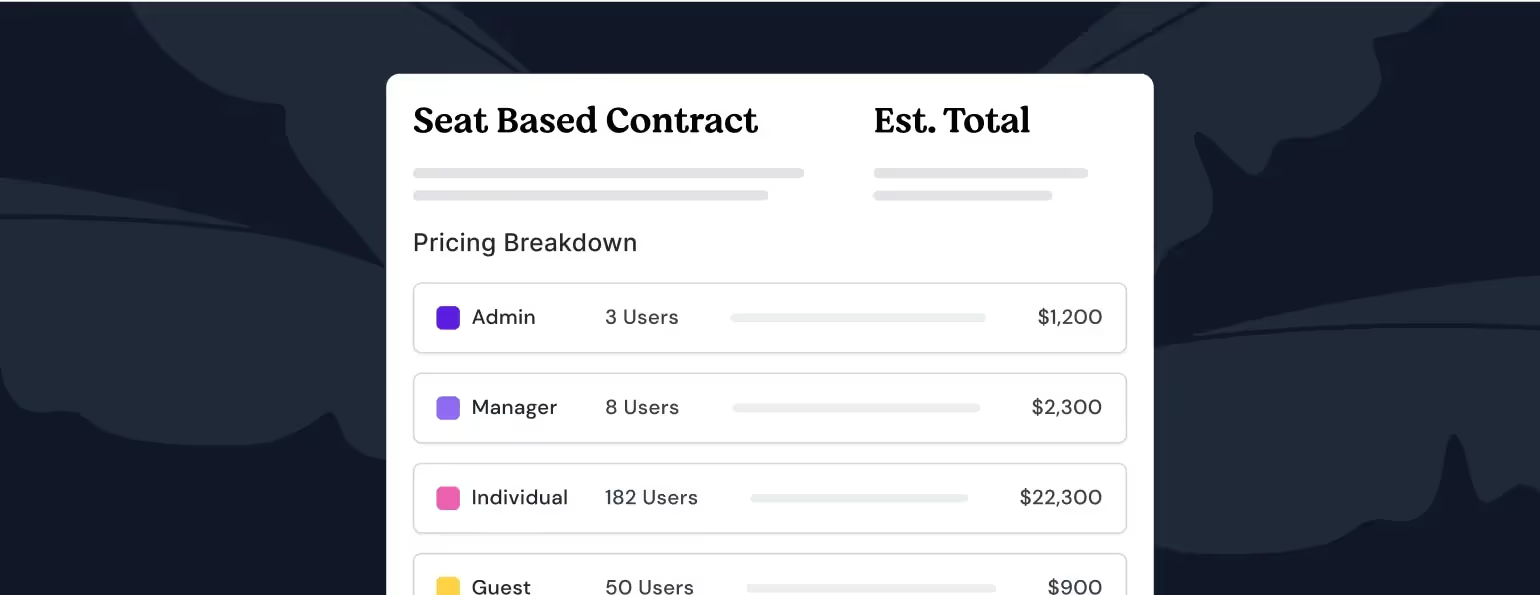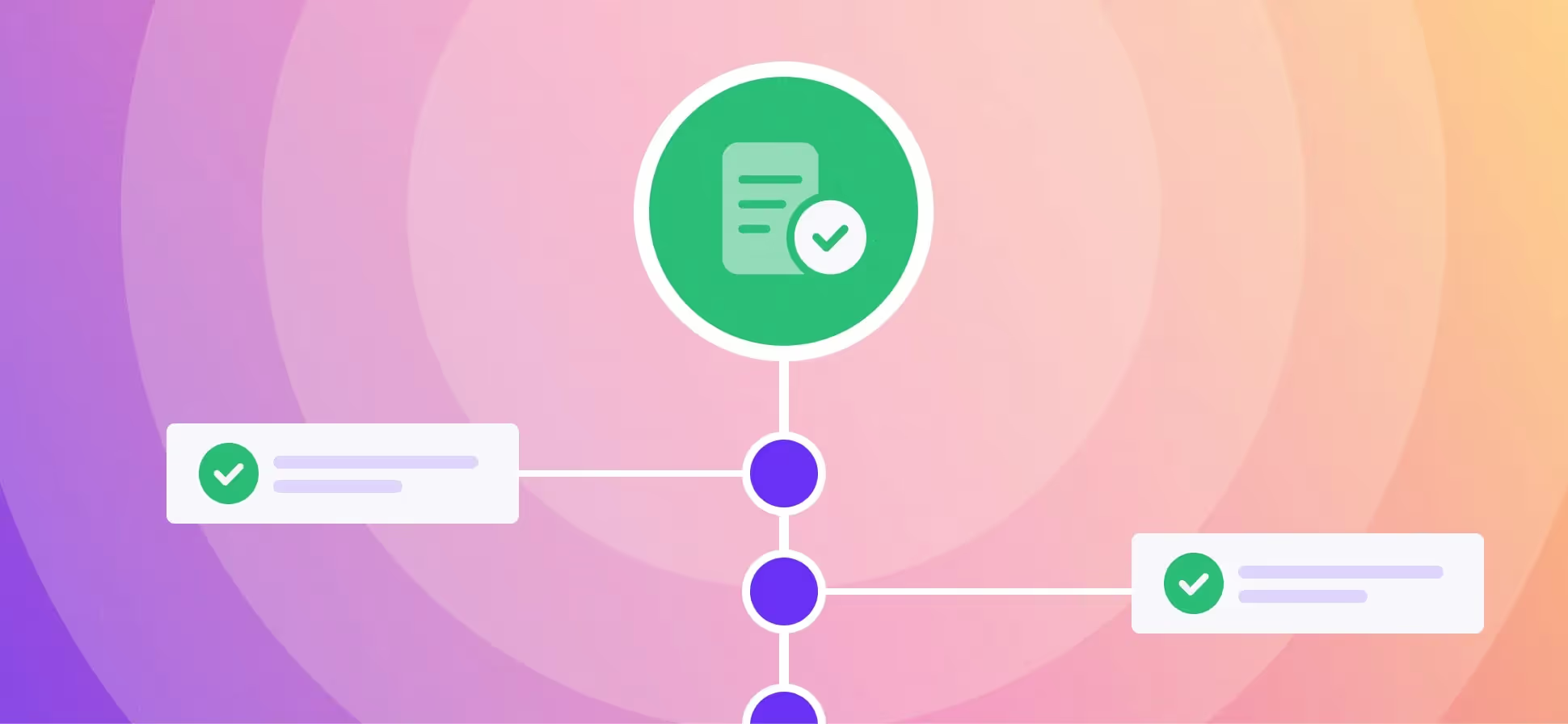A seat-based contract is a software licensing model that charges a customer based on the number of users that can access the software.
For a simple way to think about seat-based contracts, consider how ticket-buying works at a movie theater.
A 100-seat theater sells tickets at a certain price per seat—let’s say $10. That $10 grants a ticket holder access to the movie. Whether ticket holders see the movie or not makes little difference to the theater, since the number of tickets sold is what’s important for its revenue. If a show sells out, the theater rakes in $1000, even if only 50 ticket buyers show up.
Seat-based software contracts work on a similar principle. The customer pays a set fee for each user who wants access to the software, regardless of how much that person actually uses the program.

Two types of software contract models
The two most common types of software contract models are seat-based and usage-based.
Which one a software supplier offers likely depends on the type of software and the industry.
For example, if a program deals more with data and ingestion (think Snowflake or Twilio), the company selling it will likely go with a usage-based model.
When the product involves creativity, analysis, or reporting (think Salesforce or Adobe), seat-based contracts usually make more sense. Interested customers are charged for licenses based on the number of people who want that program’s advanced creative or analytical capabilities at their fingertips.
Nuances within seat-based contracts
Among seat-based contracts, there are a few key distinctions to watch for.
A company might offer to sell software licenses on a buy-as-you-go basis—meaning you can purchase licenses one by one as needed. Or they might offer them on a fixed basis, meaning you must buy licenses in a specific bundle or when it’s time to negotiate a contract renewal, both of which are far less flexible.

The benefits for buyers
For buyers, the benefits of a seat-based contract model are numerous.
For one, it’s easier to track what you’ll spend on a piece of software (a fixed fee, per user).
A seat-based contract can come in handy when you’re projecting your own company’s growth (and therefore spend). When your headcount goes up, your software license fee will go up accordingly.
Software that’s sold in a seat-based setup is often easier to roll out than usage-based software. Once the seats are bought, you train one person in your company to be the expert at using that software. They’re aware of and train anyone else who needs to use it, and the license provisioning is simple.
The benefits for sellers
Seat-based contracts also have important benefits for sellers.
For example, it’s easy to lock a potential customer into a fixed cost for the year (assuming they can't change the license count in the middle of the contract term). This means a seller has guaranteed annual income upfront.
Just like in the movie theater example, software suppliers don’t always care whether their software is being used or not, so long as they sell enough seats. To be sure, this can be short-term thinking on a supplier’s part. More scrupulous software companies will work to ensure that customers are happy with their products and continue signing up for them because they find them useful year after year.
Tips for negotiating a seat-based contract
1. Be as conservative as possible when projecting growth
That’s because, according to Zach Wolf, Group Manager for Commercial Executives at Tropic, it’s easier to add software licenses than take them away.

Let’s say you’re halfway through a contract term and realize you’ll need many more seats than you projected. It’s easier to reach out to a supplier and ask to buy more, rather than begging to get rid of them. “If you overestimate the number of seats, you’re likely to be stuck with them for a year,” he says.
2. Evaluate active users
A good rule of thumb is to evaluate active users on major software programs at least twice a year, says Wolf. The more often, the better. “You could pay for 100 licenses and never know you’re using 75 unless you’re doing an audit (or plugged into Tropic’s SaaS management usage tracking),” says Wolf.
3. Turn your sales rep into your partner
Despite the short-term incentives, it doesn’t make long-term sense for people to sell or buy useless licenses. If someone sold you software you didn’t need, ask that person to help you fix the situation.
“Some people assume their reps will try and upsell them no matter what,” says Wolf. “We’ve found that they want to sell you what you’re going to use.”

4. Understand software growth tiers
Air travelers know the price difference between first-class and economy tickets. Why should software be any different?
As soon as possible in a negotiation, ask your sales rep to explain their company’s growth tiers, meaning the price per license at all levels. Does a discount kick in at 200 licenses or 2,000? It can help you make a call about buying licenses for an entire team or department.
“If you don’t know the tiers, you don’t know what’s sitting just beyond your vision and visibility,” says Wolf.
5. At higher volumes, lean in
With software, more users doesn’t always mean the supplier incurs a higher cost. So, the rate you pay for 20 licenses shouldn't be the same you pay at 200. There simply aren’t significantly higher costs to be passed down to the customer.
6. Take a holistic view of your company’s software and services
Perhaps your team started the year at 300 people, and now it’s jumped to 1,000. When you negotiate new seat-based contracts, use the volume to get what you want.
Maybe one team needs more help knowing how to use a software program; use your leverage to negotiate hands-on training sessions for them. Another team might include several power users who need extra features or functionality. Ask the supplier to throw those in.

“When we work with companies on their contracts, we find that some teams need a little of this, but less of that,” says Wolf. “Evaluate the whole package, and use the buying power driven by your license count to achieve better results.”
Related blogs
Discover why hundreds of companies choose Tropic to gain visibility and control of their spend.







